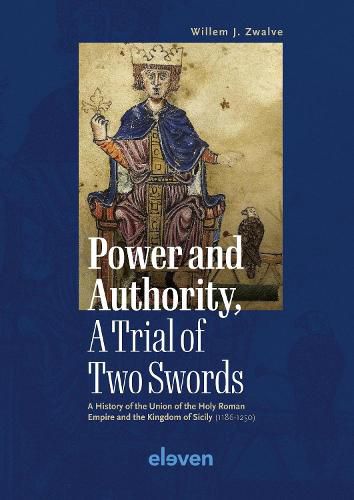Readings Newsletter
Become a Readings Member to make your shopping experience even easier.
Sign in or sign up for free!
You’re not far away from qualifying for FREE standard shipping within Australia
You’ve qualified for FREE standard shipping within Australia
The cart is loading…






This title is printed to order. This book may have been self-published. If so, we cannot guarantee the quality of the content. In the main most books will have gone through the editing process however some may not. We therefore suggest that you be aware of this before ordering this book. If in doubt check either the author or publisher’s details as we are unable to accept any returns unless they are faulty. Please contact us if you have any questions.
On 27 January 1186 the German king Henry VI, son and heir of the Roman Emperor Frederick I 'Barbarossa', married Constance of Hauteville, heir to the throne of Sicily, in the Basilica of St Ambrose in Milan. The royal wedding sealed the union of the Kingdom of Sicily and the Holy Roman Empire, creating an enormous empire stretching from the shores of the North Sea to the beaches of Africa. The union also incited a major geopolitical conflict dominating European politics in the thirteenth century since it seriously compromised the sovereignty which the Roman papacy professed to exercise over all Christendom as well as the territorial integrity of the Papal State. Consequently, succeeding popes ( Innocent III, Gregory IX and Innocent IV) endeavoured to undo that union at all costs. The ensuing struggle between the Roman papacy and the Hohenstaufen emperors culminated in the deposition of the Emperor Frederick II by Pope Innocent IV on the First Council of Lyon in 1245, resulting in the final dissolution of the union of the Empire and the Kingdom of Sicily and the extermination of the Hohenstaufen race. By inviting a foreign prince, Charles of Anjou, brother to King Louis IX of France, to fight the last of the Hohenstaufens, papal politics ultimately turned the Italian peninsula into a battlefield for the two major powers of early-modern Europe: Spain and France.
The origins, the vicissitudes, and the consequences of the union of the Empire and the Kingdom of Sicily are the subject of the first part of this book. The second part deals with the trial of Frederick II at Lyon, the court and its competence, the law involved and, lastly, the execution and aftermath of the sentence of the court.
$9.00 standard shipping within Australia
FREE standard shipping within Australia for orders over $100.00
Express & International shipping calculated at checkout
This title is printed to order. This book may have been self-published. If so, we cannot guarantee the quality of the content. In the main most books will have gone through the editing process however some may not. We therefore suggest that you be aware of this before ordering this book. If in doubt check either the author or publisher’s details as we are unable to accept any returns unless they are faulty. Please contact us if you have any questions.
On 27 January 1186 the German king Henry VI, son and heir of the Roman Emperor Frederick I 'Barbarossa', married Constance of Hauteville, heir to the throne of Sicily, in the Basilica of St Ambrose in Milan. The royal wedding sealed the union of the Kingdom of Sicily and the Holy Roman Empire, creating an enormous empire stretching from the shores of the North Sea to the beaches of Africa. The union also incited a major geopolitical conflict dominating European politics in the thirteenth century since it seriously compromised the sovereignty which the Roman papacy professed to exercise over all Christendom as well as the territorial integrity of the Papal State. Consequently, succeeding popes ( Innocent III, Gregory IX and Innocent IV) endeavoured to undo that union at all costs. The ensuing struggle between the Roman papacy and the Hohenstaufen emperors culminated in the deposition of the Emperor Frederick II by Pope Innocent IV on the First Council of Lyon in 1245, resulting in the final dissolution of the union of the Empire and the Kingdom of Sicily and the extermination of the Hohenstaufen race. By inviting a foreign prince, Charles of Anjou, brother to King Louis IX of France, to fight the last of the Hohenstaufens, papal politics ultimately turned the Italian peninsula into a battlefield for the two major powers of early-modern Europe: Spain and France.
The origins, the vicissitudes, and the consequences of the union of the Empire and the Kingdom of Sicily are the subject of the first part of this book. The second part deals with the trial of Frederick II at Lyon, the court and its competence, the law involved and, lastly, the execution and aftermath of the sentence of the court.